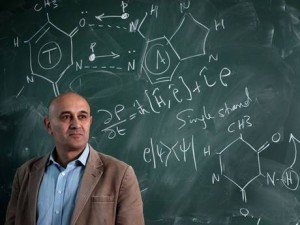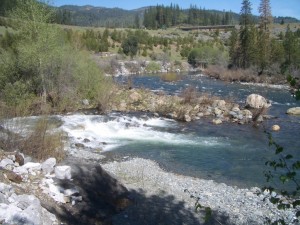With science replacing religion, and religion becoming a hollow imitation (or worse) of its former position and power in human civilization, the mad scientist trope has receded in movies and post-modern imagination. But I just read evidence of the reality, supplied by a theoretical physicist named Jim Al-Khalili.
 In an piece obtusely entitled, “Where Science Is Going,” Al-Khalili said: “There is no longer any denying the worrying transformation of our planet that is taking place, for which ambitious global geo-engineering solutions may need to be found.”
In an piece obtusely entitled, “Where Science Is Going,” Al-Khalili said: “There is no longer any denying the worrying transformation of our planet that is taking place, for which ambitious global geo-engineering solutions may need to be found.”
“Ambitious global geo-engineering solutions” with respect to climate change is about as close to mad-scientist evil as a reputable scientist can come. Nothing fills a serious person with greater despair than false optimism at a moment of great peril.
The philosophical baggage of such a loony scheme is almost too much to bear. First, it’s completely illogical to suppose and propose that “the worrying transformations of our planet” (aka global warming) can be solved by using the same mentality (control of nature) with the same mechanism (industrial science) that caused the problem in the first place.
Second, even if some oceanic carbonated solution could be found for soaking up CO2, it would be a crazy experiment in the law of unintended consequences on a global scale. Whole systems in nature cannot be restored by inherently partial interventions by man.
I went to an Audubon Society lecture this week about the history of the Sacramento River, the main tributary and lifeblood of the “breadbasket of the world,” the Central Valley of California. Hydraulic gold mining, profligate dam building, levee-construction and other assaults too numerous and gut-wrenching to mention all but destroyed this magnificent river, which once boasted the best tasting and most healthful drinking water in the world near its headwaters.
But in the early 1990’s, one of the worst environmental disasters in America’s rich history of environmental disasters gave clear and compelling evidence of nature’s capacity to recover from the assaults of man.
In 1991, at a small foothill town near the Oregon border called Dunsmuir, a Southern Pacific train derailed while crossing the Upper Sacramento River. It spilled 19,000 gallons of the herbicide metam sodium, which killed every living thing in the river down to the Shasta Dam. The chemical was so toxic it was three days before scientists were even allowed near the water.
Since that section of the Sacramento is one of the premier fly-fishing and outdoor recreation areas in the nation, the politicos wanted to re-stock the river as soon as possible. But an intelligent environmental scientist prevailed, and the river was allowed to heal itself, which it did in an astounding four years.
As goes the Sacramento River, so too, possibly, global atmospheric restoration. Therefore talk of “ambitious geo-engineering solutions” is not just premature; it is part of the same dense mentality that is destroying the earth.
part of the same dense mentality that is destroying the earth.
The essential failure of science, aided and abetted by Western philosophy, is the failure to understand the core distinction between the way nature operates and the way man using thought operates, though such a distinction could and should be taught to young children.
In evolution, all systems and species evolve together and are seamlessly interrelated. Whereas the human mind renders nature into parts, cleaving animals, plants and minerals along lines of self-made separation for purposes of utilitarian benefit.
That’s fine if thought, using its sharpest scalpel, science, knows when to stop. But the history of our species, especially since the dark dawn of the Industrial Age, is that the Sorcerer’s Apprentice cannot stop separating, and so we are fragmenting nature all to hell.
To assume that the same scalpel that is cutting nature to shreds can be used to repair the wounds man has inflicted on nature is the epitome of human hubris. Left alone, nature can and will heal herself. But it is we humans that first need healing, which begins when the mind learns how to leave off and let go.
Al-Khalili proclaims: “As a humanist, I tend to have faith in humankind’s capacity to make the right choices, and in my fellow scientists’ ability to eventually solve the world’s problems with a deeper understanding of the universe and our place in it and with the technological applications of this knowledge.”
Though that sounds reasonable and hopeful, in actuality it’s foolhardy and arrogant. Is humankind making the right choices? Only a deluded scientist or self-serving politician would still proclaim “faith in humankind’s capacity to make the right choices.” How many species must man drive to extinction before human destructiveness is faced? How many cities must be submerged due to global warming before the idea that science can fix everything comes into doubt?
Al-Khalili continues to go off the rails when he waxes optimistic about his “fellow scientists’ ability to solve the world’s problems with a deeper understanding of the universe and our place in it.” That is precisely the juncture where the aims and methods of science fundamentally differ with the basic intent and approach of philosophy—or should, if philosophers were doing their jobs.
A difference of intents need not produce a conflict of activities, if the domains of science and philosophy understand where they fit into the larger scheme of human understanding. Science simply cannot provide a deeper understanding of the universe and our place in it, because such an understanding does not derive from scientific knowledge at all.
Understanding of our place in the universe derives from the insight that comes to the silent mind of the self-knowing human being. And for that to occur, ‘higher thought,’ including high science, must be regularly set aside.
Al-Khalili ends with a statement that contradicts his title: “For all its success, one thing science cannot do is allow us to see the future.” That’s true, scientists don’t see “where science is going,” or leading the human race.
Martin LeFevre

